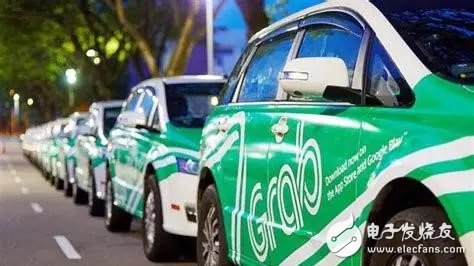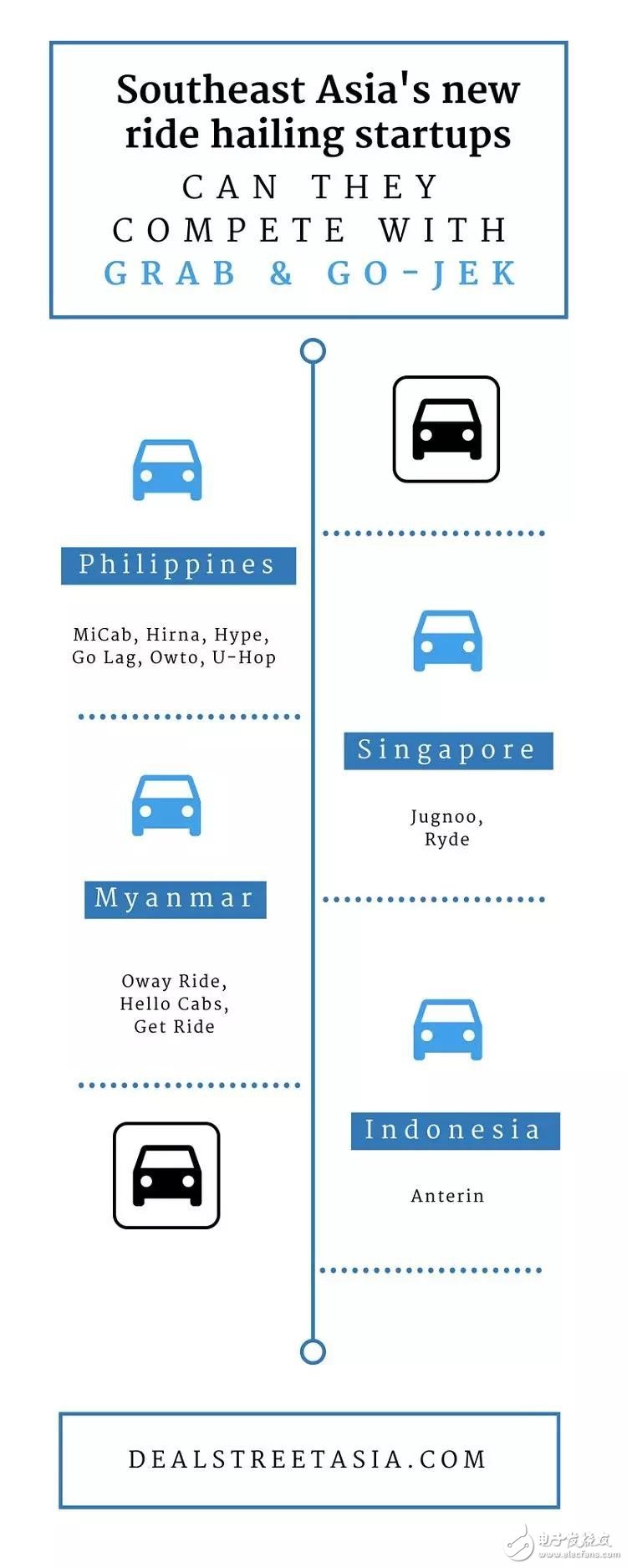For SoftBank, which has a bigger travel dream, Uber does not need to own the world in the future, as long as it can bring investment income.
Under the plan of SoftBank Sun Zhengyi, an acquisition and integration drama sweeping the travel markets of Singapore, Indonesia, Malaysia and India is being staged.
In these markets, Uber has become a supporting role under SoftBank's baton and withdrew step by step in the sound of ebb, but few people care about the "mess" after the ebb.
Not long ago, hundreds of idle vehicles suddenly flooded into Singapore's second-hand car market. Among them, most are Mazda 3 Sedan and Honda Vezel Crossover, and both were purchased last year (almost 80% new). Customers only need to pay about 70,000 SGD to drive a Mazda 3, which is nearly SGD 20,000 lower than the market price of the new car. This kind of "extra value" situation was almost invisible in the used car market in the past.
Where do these cars come from?On the one hand, car market observers and consumers in Singapore are worried that these relatively cheap vehicles will have an impact on the local used car and new car market; on the other hand, Uber may be hiding in a corner, clutching his chest and shouting “meat hurts.†". Yes, these cars all come from Lion City Rentals, a Singapore taxi company under Uber.

In March of this year, Uber announced its withdrawal from the Southeast Asian market and sold all of its operations in the region to Singapore-based company Grab. However, Uber's so-called "all businesses" did not include Lion City Rentals, and Grab also made it clear that it would not take over.
No one thought that on May 13, on the first Sunday after Uber officially withdrew from the Singapore market, suddenly about 50 Lion City Rentals’ Mazda 3 cars were on sale on SgCarMart. .
It is said that after the carnival of capital, it is a mess. In sharp contrast to the bustling scene of the second-hand car market in Singapore, Uber has left. This time, the markets it withdrew include eight Southeast Asian countries: Singapore, Indonesia, Thailand, the Philippines, Malaysia, Vietnam, Myanmar and Cambodia.
If you recall carefully, you should remember that Uber withdrew from the Chinese and Russian markets in 2016 and 2017. Judging from the timeline, it is almost a big step back in one year.
So why did Uber leave these markets? What impact did its departure have on these markets? Where will the next market leave?
Uber withdraws from the Southeast Asian market, in fact, three winsOn May 7, Uber officially withdrew from the Singapore market, which marked that its ride-hailing and UberEats businesses in Southeast Asia would all belong to the Singapore company Grab, and Uber would exchange it for a 27.5% stake in the latter. In Southeast Asia, which has a population of approximately 640 million, this transaction successfully broke records and became the largest acquisition in the history of the ride-hailing industry in the region.
In this deal, SoftBank, Uber and Grab are not losers.
Among them, SoftBank is the shareholder of the latter two, and Grab's latest round of about 2.5 billion US dollars in financing is also led by SoftBank. After many blessings by SoftBank, Grab, which has received Uber’s business, is currently valued at US$6 billion. For Uber, although it has withdrawn from the Southeast Asian market, it owns 27.5% of Grab’s shares, which means that it has been in the entire market before. The investment of 700 million US dollars has been exchanged for nearly 1.7 billion US dollars of equity. As for SoftBank, it should be more satisfied.
In order to fight Grab and another Indonesian start-up company Go-Jek in these markets, Uber has to invest about 200 million US dollars a year. With the withdrawal of Uber, Grab has secured the top spot in the ride-hailing industry in Southeast Asia. This move also puts a lot of pressure on Go-Jek.
Currently in the Southeast Asian market, Grab's taxi-hailing business covers more than 190 cities, far surpassing the combined markets of Uber and Go-Jek. From the analysis of shareholders, Google and Tencent are behind Go-Jek. Whether Grab continues to fight or will see more changes in the next step depends on the attitudes of Google and Tencent.

However, Grab and Go-Jek should not immediately feel alone, because at this moment many industry recruits are gearing up and eager to try.
In March, when Grab announced the acquisition of Uber's Southeast Asia business, antitrust agencies in the Philippines, Singapore, and Malaysia were dispatched at almost the same time to investigate whether the transaction would lead to a monopoly in the taxi-hailing market in the region.
While investigating, we found that relevant government departments are also actively promoting market competition. For example, the Philippines, Malaysia, Singapore, Indonesia, and Myanmar have issued operating licenses to a number of newly established travel service startups. See the figure below for details:

As can be seen from the figure, there have been six start-ups in the Philippines alone, three in Myanmar, two in Singapore and one in Indonesia. It seems that for a long time to come, the Southeast Asian taxi market will still face fierce competition.
Recall that in 2016, Uber sold its entire business in China in exchange for a 20% stake in Didi. The withdrawal method is almost the same as this time. Another article pointed out that Uber's approach to leaving the Russian market in 2017 was the same.
The author does not agree with this point, and it can even be said that Uber has not completely left the Russian market.
The lotus root is broken to connect Russia, and the stinky chess is still a coupIn 2013, when Uber recklessly entered the Russian market, local company Yandex had already established a firm foothold in the taxi industry. Locally, Yandex is known as the "Google of Russia", and most of its revenue comes from search, portals and e-commerce businesses. Although it seems diversified, Yandex still succeeded in taking the lead in the Russian taxi-hailing market.
Three years after the competition started, Yandex cancelled the minimum fare in 2016 in order to suppress Uber's limelight. Subsequently, its market share soared and revenue doubled (and no longer profitable). In the end, after many rounds of money burning wars, the two sides shook hands and made peace.
After negotiations, Uber and Yandex decided to invest 225 million U.S. dollars and 100 million U.S. dollars to establish a joint venture to incorporate Uber’s taxi and meal delivery services in Azerbaijan, Belarus, and Kazakhstan, and Yandex’s taxi services in Armenia and Georgia. .
Uber owns a 36.6% stake in the new company and holds three of the seven seats on the board of directors; Yandex owns 59.3% of the shares. The head of the new company is Khudaverdyan, CEO of Yandex. At the same time, both Uber and Yandex brands will continue to operate, but the driver-side App will be merged into one, which means that passengers can choose either Uber or Yandex App to request a ride. After the merger, the monthly order volume of the new company reached 35 million (times), an increase of 400% over the previous year.
In response, Pierre-Dimitri Gore-Coty, head of Uber in Europe, the Middle East and Africa, once publicly stated, “This transaction proves our unique growth model in the region, which will help Uber continue to build a sustainable global business. ."
Of course, although this investment looks very cost-effective, Uber also tried to whitewash the embarrassment behind this decision, trying to prove to the outside world that this is a successful expansion of Uber, but from the perspective of industry insiders, it is obviously still a very ugly one. Of retreat.
Let me add a word here, Uber's exit and establishment of a joint venture in the Russian market does not have SoftBank's presence.
Obviously, SoftBank has its own plans for the Russian market. For example, in July 2017, SoftBank announced an investment of US$114 million in the Russian technology company Brain Corp, and requested the other party to develop a full-featured robot within 3 to 5 years.
Softbank's current priority is to allow Uber to exit developing countries as soon as possible, focus on core markets such as North America and Europe, and seek to go public as soon as possible.
Uber "Global Retreat", SoftBank's Weapon BehindIn response to the recent decision to withdraw from Southeast Asia, Uber CEO Dara Khosrowshahi described in a letter to employees: “A potential danger in Uber’s global strategy is that we have fought too many competitors in too many places. "
In addition, in another message on Uber’s official website, he wrote, “By selling these businesses, we can increase our core markets and compete with competitors in these markets. At the same time, in those markets where we are not involved in operations In the large and important markets of China, we also have valuable and increasingly value-added equity."
In fact, Uber plans to IPO in 2019 (this is also the promise of the new CEO after the introduction of SoftBank). Before that, it urgently needs to prove to the capital market its profitability and the sustainability of its business, which means it has to "strike a knife from the palace" and streamline its business to improve the company's profitability. It can be said that SoftBank, an important shareholder behind Uber, exerted a great influence on its strategic retreat in Southeast Asia.
According to data from PitchBook, SoftBank has invested in many ride-hailing companies in major markets around the world, spending tens of billions of dollars. If its investment in Uber is regarded as a magnitude "one", then its investment in 99 (Brazilian taxi company) is two, its investment in Didi and Grab are both four, and its investment in Ola (Indian taxi company) Investment is five.
For SoftBank, what it loves the most is that the taxi-hailing business in a certain country or region is under the control of a single enterprise. From the current situation, it seems that there is only Didi such a company, and SoftBank also seems to show a preference for Didi, which is a bit awful for Uber.
SoftBank has always urged Uber to focus on its core market. In January of this year, soon after becoming a member of Uber’s board of directors, Rajeev Misra, a senior SoftBank executive, told the media: “Uber should reduce its losses in unprofitable markets and focus on its operations in the United States, Europe, Latin America and Australia.â€
Interestingly, one month before the sale of the Southeast Asia business to Grab, Uber CEO Dara Khosrowshahi also stated that he would continue to "actively invest" in the region. From this point of view, Uber's withdrawal from Southeast Asia is indeed related to SoftBank's pressure.
However, when it comes to market operations, there may be other details worthy of our attention and consideration.
Globalization vs. localization, what other layouts does SoftBank haveIn fact, Uber's global expansion model is very simple and rude, almost blindly "copy and paste." This strategy may be effective in some markets in Europe and America, but it has repeatedly encountered Waterloo in the Asian and Russian markets. Local companies in these regions clearly understand the characteristics of the local market better than Uber, and each has their own unique tricks, but Uber always seems brainless and has hindsight.
For example, in Singapore, the Grab taxi-hailing platform, established in 2012, initially only did taxi business and accepted cash payments, but Uber only realized the importance of cash payments two years later. Later, Grab also added private cars and motorcycles, and provided other payment methods for passengers to choose. In addition, Grab also provides shared bicycle services.
In Russia, Uber does not have its own mapping software, so it uses Google Maps, while Yandex's navigation is more accurate and favored by local drivers. Especially in the case of frequent road closures and traffic jams, Yandex's navigation advantages are more obvious.
Look at the current Indian market.
First, Ola allowed customers to pay in cash from the very beginning, because most Indians do not have credit or debit cards; second, India is a multilingual country, so Ola provides locals with nine language options, while Uber can only use English Transaction; once again, Ola offers lower-priced ride-hailing options such as electric tricycles to meet the needs of low-income Indians; in addition, India’s network is not stable, so Ola even allows customers to order cars through text messages...
All of these, on the one hand, highlight the in-depth understanding of local companies on the local market, but also make Uber appear blind and out of focus in these markets. So, will Uber's next market withdraw from India?
Uber seems to be saying: No!Not only does it say no, but Uber seems to have begun to acquire Ola. But this kind of calculation will certainly not get the consent of SoftBank, which owns 30% of Ola. Some analysts said that if Uber wants to make a profit, it should withdraw from the Indian market as soon as possible.
In India, Ola's business covers about 110 cities, while Uber has only more than 30; at the same time, the former has more than one million drivers, while Uber has only about 450,000. According to KalaGato's data, Ola's market share rose from 53% in July 2017 to 56.2% in December, while Uber's market share fell from 42% to 39.6% during the same period. In addition, Tencent and SoftBank injected US$1.1 billion into Ola in October last year to further strengthen its financial strength.
In this way, Ola, who has funds, ideas and actions, has not fallen behind in the market competition with Uber.
In addition, Uber is also facing pressure from a fire in the backyard. In 2017, according to Second Measure data, Uber's share of the U.S. ride-hailing market fell from 83% to 74%, while Lyft increased from 15% to 22%. Not only that, Uber may also encounter challenges from local start-ups and automakers in the United States; in Europe, a lot of issues related to regulations and labor protection have also made it suffer.
Under domestic and foreign difficulties, Uber is likely to further narrow its global business, and the money-burning war in the Indian taxi market also makes it feel embarrassed, so the possibility of Uber withdrawing from India seems very high.
However, Barney Harford, chief operating officer of Uber, previously told CNBC that Uber would no longer sell some of its businesses in exchange for a small stake in competitors. Uber CEO Dara Khosrowshahi also said that Uber will not withdraw from India or other important markets in the near future. I don’t know if these "swearing oaths" will eventually break their promises in front of the power of capital...
The Asian market retreats, gaining praise from the capital marketSince 2013, Uber has started an ambitious enclosure movement around the world. On Uber's official website, they proudly claim that they have entered 616 cities in 77 countries and regions.
Although Uber has been struggling from time to time when competing with many local companies, its unique advantages are irreplaceable, that is, its global market footprint, which means that users can use the same App in dozens of countries. Take a taxi.
In fact, regarding Uber’s successive withdrawal from the markets of China, Russia and Southeast Asia, some industry insiders said, “This is actually very wise, especially at the critical moment of the IPO.†They believe that Uber does not need to prove itself in these markets. It is not beautiful for Songdi to invest in potential stocks (local travel companies) to obtain income.
In addition, there are also opinions that Uber's withdrawal from Russia is worth continuing. Because Uber's brand is well-known around the world, most of the time local companies are very welcome to form joint ventures with it, especially if they have control.
Binding to the Uber brand has a better promotion effect for them, and in overseas markets, they can also order Uber cars through their own local App, which is very convenient and efficient. In this way, Uber can earn white money almost immediately.
Now, Uber, which is in the hands of SoftBank, has stopped brainless expansion in the global market. For SoftBank, which has a bigger travel dream (including the driverless field), Uber does not need to own the world in the future, as long as it can bring investment income.
Smart Watch For Men
Smart Watch For Men
everyone enjoys luck , https://www.eeluck.com